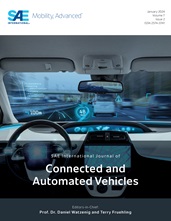Clustering-Based Trajectory Prediction of Vehicles Interacting with Vulnerable Road Users
- Content
- For safe and comfortable automated driving in the urban domain, especially in complex geometries as intersections, the prediction of surrounding traffic participants is fundamental. Several works in this field focus on predicting the behavior of vulnerable road users (VRU) at crossings. However, no approaches were found dealing with predicting the interaction between turning vehicles giving right of way or cooperating with VRU, which is substantial for the trajectory planning of following vehicles. Infrastructural sensor data from an intersection in Germany enables the development of a prediction concept for vehicles interacting with VRU. Our studies show that the original criteria for classifying an interaction between vehicles and VRU—the post-encroachment time (PET)—is not suitable as ground truth criteria for the aimed prediction. Instead, a clustering-based labelling approach with k-means shows promising results in trajectory pattern distinction. For the ensuing pattern classification, a framework is established for comparing three different supervised learning algorithms (Logistic Regression, Neural Networks, and Support Vector Machines [SVM]) with varying features and prediction horizons with best results of the logistic regression validated at a fivefold cross-validation. The classification builds the basis for a succeeding promising trajectory prediction.
- Pages
- 12
- Citation
- Thal, S., Sonka, A., and Henze, R., "Clustering-Based Trajectory Prediction of Vehicles Interacting with Vulnerable Road Users," SAE Int. J. CAV 4(3):235-245, 2021, https://doi.org/10.4271/12-04-03-0019.
